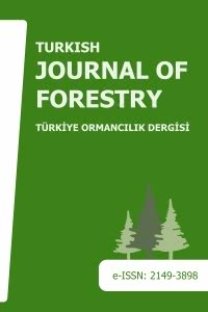Tür çeşitliliğinin ekolojik açıdan önemi ve kullanılan bazı indisler
Tür çesitliliği alfa veya beta düzeyinde belirlenmektedir. Diğer çesitlilik düzeyleri, alfa ve beta çesitliliğinin farklı ölçeklerine denk gelmektedir. Alfa çesitliliği ortam içi, beta çesitliliği ise ortamlar arası hesaplanır. Fizyografik ve edafik faktörler tür çesitliliğini önemli ölçüde etkileyebilmektedir. Bu nedenle tür çesitliliğinin fizyografik ve edafik faktörlerle iliskilendirilmesi gerekir ki, buda ekolojinin konusudur. Bir ekosistem için tür çesitliliği ifadesi kullanıldığında; bitkiler, hayvanlar, böcekler, toprak mikroorganizmaları gibi bir çok canlı grubundan bahsedilmektedir. Bundan dolayı tür çesitliliğinin kalitatif ve kantitatif olarak belirlenmesi, botanik, entomoloji, zooloji gibi disiplinlerinin beraberce kombine ettikleri bir is olmaktadır. Ekoloji bilimi ise, bu çesitlilik değerlerini ortam faktörleri ile iliskilendirmeyi amaç edinmistir. Bu sayede, korumada öncelikli ortamlar, potansiyel olarak zengin tür çesitliliği olan sahalar, zaman içerisinde söz konusu ortamda tür çesitliliğindeki değisimler ve farklı etkilerin benzer ortamlarda tür çesitliliği üzerine etkileri belirlenebilmektedir
Anahtar Kelimeler:
sınıflandırma, biyoçeşitlilik, tür çeşitliliği, ekoloji
Importance of biodiversity from the ecological standpoint and some diversity indexes
Species diversity is determined as Alpha or Beta level. Other levels of diversity come up to different scales of the Alpha and Beta diversity. Alpha diversity is calculated intramedium, while Beta diversity is calculated inter-medium. Physiographic and edaphically factors affect species diversity significantly. For this reason, It is necessary that species diversity must be contacted with Physiographic and edaphically factors, which is an argument in ecology. When applied for species diversity expression instead of an ecosystem expression, a lot of alive groups such as plants, animals, insects, soil microorganism are mentioned. For this reason, to determine species diversity as qualitative and quantitative is an investigation combined by the disciplines such as botanic, entomology, zoology altogether. But Ecology intends to investigate relationships between this diversity dates and site factors. In this way, underlying areas in protection, areas having rich species diversity as potential, changes in species diversity with time and effects of different factors on species diversity in the similar environment can be determined.
Keywords:
classification, biodiversity, species diversity, ecology,
___
Burke, A., Esler, K.J., Pienaar, E., Barnard, P., 2003. Species richness and floristic relationships between mesas and their surroundings in southern African. Nama Karoo. Diversity and Distribution 9, 43-53.Cox, G.W., Ricklefs, R.E., 1977. Species diversity, ecological release, and community structuring in Caribbean land bird faunas. Oikos, 29, 60-66.
Dennis, B., Patil, G.P., Rossi, O., Stehnan, S., Taillie, C., 1979. A bibliography of literature on ecological diversity and related methology. In: Grassle, J.F., Patil, G.P., Smith, W.K., Taillie, C., (Eds.), Ecological diversity in Theory and Practice. International Cooperative Publishing House, Fairland, Maryland, pp. 319-353.
Gorelick, R., 2006. Combining richness and abundance into a single diversity index using matrix analogues of Shannon’s and Simpson’s indices. Eco.-graphy, 29: 525-530.
Hunter, M., Jnr. 1996. Benchmarks for managing ecosystems: are human activities natural? Conservation Biology, 10(3), 695-697.
Kaya, Z., 2003. Koruma Biyolojisi ve Biyoçesitlilik. Orman ve Av, Sayı 2003-4, Genç Ofset Matbaacılık Ltd. Sti, Ankara, 24-34s.
Keylock, C. J., 2005. Simpson diversity and Shannon-Wiener index as special cases of a generalized entropy. Oikos 109: 203-207.
Liang, J., Buongiorno, J., Monserud, R.A., Kruger, E.L., Zhou, M., 2007. Effects of diversity of tree species and size on forest basal area growth, recruitment, and mortality. Forest Ecology and Management, 243: 116-127.
Lundholm, J.T., Larson, D.W., 2003. Relationships between spatial environmental heterogeneity and plant species diversity on a liestone pavement.. Ecography 26, 715-722.
Magurran, A.E., 1988. Ecological Diversity and its Measurement. Princeton Universty Pres, Princeton, NJ.
May, R.M., 1975. Patterns of species abundance and diversity. In M.L. Cody and J.M. Diamond (Eds.). Patterns of Species Abundance and Diversity. Harvard University Press, MA. pp. 81-120.
Mclntosh, R. P., 1967. The continuum concept of vegetation. Bot. Rev. 33, 130.
Özkan, K., 2003. Beysehir Gölü Havzası’nın Yetisme Ortamı Özellikleri ve Sınıflandırılması. Đ.Ü. Fen Bilimleri Enstitüsü, Doktora Tezi (Yayınlanmamıs), Đstanbul.
Patil, G.P., Taillie, C., 1949. An overview of diversity. In: Grassle, J.F., Patil, G.P., Smith, W.K., Taillie, C., (Eds.), Ecological diversity in Theory and Practice. International Cooperative Publishing House, Fairland, Maryland, pp. 3-27.
Pausas, J.G., Austin, M.P., 2001. Patterns of plant species richness in relation to different environments. An appraisal. Journal of Vegetation Science 12, 153-166.
Pausas, J.G., Sáez, L., 2000. Ptheridophyte richness in the NE Iberian Peninsula. Biogeographic patterns. Plant ecology, 148: 195-205.
Stoms, D.M., Estes, J.E., 1993. A remote sensing research agenda for mapping and monitoring biodiversity. International Journal of Remote Sensing 14: 1839-1860.
Simpson, E.H., 1949. Measurement of diversity Nature, 163, 688.
Taylor, L.R., Kempton, R.A., Woiwod, I.P., 1976. Diversity statistics and the log-series model. Journal of Animal Ecolog,y 45, 255–271.
Whittaker, R. H., 1977. Evolution of species diversity in land communities.. Evolutionary Biology 10:1-67.
Wilson, M.V., Shmida, A., 1984. Measuring beta diversity with presence–absence data. Journal of Ecology, 72, 1055–1064.
- ISSN: 1302-7085
- Yayın Aralığı: Yılda 2 Sayı
- Başlangıç: 2000
Sayıdaki Diğer Makaleler
Isparta kenti eski çöp depolama alanının bitkilendirilmesi üzerine araştırmalar
CANDAN KUŞ ŞAHİN, NİLÜFER SERİN
Tür çeşitliliğinin ekolojik açıdan önemi ve kullanılan bazı indisler
SELMAN KARAYILMAZLAR, YILDIZ ÇABUK, Ayşin AŞKIN
Contributions to the moss (musci) flora of Çankırı (Yapraklı)
Orman topraklarında mikroorganizmalar tarafından gerçekleştirilen azot dönüşümler
Ilgaz Dağı Milli Parkı'nın orman peyzajı ve estetiği açısından değerlendirilmesi
Adaptation of some poplar clones to the lake district in Turkey
Korhan TUNÇTANER, HALİL BARIŞ ÖZEL
2/B uygulamalarına ilişkin bazı sorunlar: Isparta-Aksu yöresi örneği
